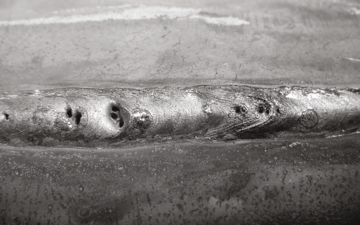What is Porosity in Welding: Important Tips for Achieving Flawless Welds
What is Porosity in Welding: Important Tips for Achieving Flawless Welds
Blog Article
Recognizing Porosity in Welding: Discovering Causes, Impacts, and Prevention Techniques
As professionals in the welding industry are well aware, recognizing the causes, results, and prevention techniques related to porosity is important for accomplishing robust and dependable welds. By diving right into the origin creates of porosity, examining its destructive results on weld quality, and exploring reliable prevention strategies, welders can improve their expertise and skills to generate top quality welds continually.
Common Root Causes Of Porosity
Contamination, in the type of dust, grease, or rust on the welding surface area, produces gas pockets when heated, leading to porosity in the weld. Incorrect shielding occurs when the protecting gas, commonly utilized in procedures like MIG and TIG welding, is unable to completely shield the liquified weld pool from responding with the surrounding air, resulting in gas entrapment and subsequent porosity. Furthermore, inadequate gas protection, often due to inaccurate circulation prices or nozzle positioning, can leave parts of the weld unguarded, permitting porosity to create.
Results on Weld Top Quality
The visibility of porosity in a weld can considerably endanger the total quality and stability of the welded joint. Porosity within a weld creates spaces or tooth cavities that weaken the framework, making it much more prone to splitting, deterioration, and mechanical failing.
In addition, porosity can impede the efficiency of non-destructive testing (NDT) methods, making it challenging to identify various other problems or discontinuities within the weld. This can lead to considerable security concerns, especially in critical applications where the structural honesty of the bonded parts is vital.

Prevention Techniques Summary
Provided the damaging effect of porosity on weld top quality, reliable prevention techniques are crucial to maintaining the architectural honesty of bonded joints. In addition, picking the appropriate welding criteria, such as voltage, present, and take a trip speed, can aid reduce the danger of porosity development. By incorporating these avoidance techniques into welding techniques, the incident of porosity can be dramatically decreased, leading to stronger and a lot more reputable bonded joints.
Importance of Correct Protecting
Correct protecting in welding plays a critical function in stopping climatic contamination and guaranteeing the honesty of bonded joints. Shielding gases, such as argon, helium, or a blend of both, are typically made use of to secure the weld pool from reacting with elements airborne like oxygen and nitrogen. When these responsive elements enter into call with find out here the warm weld pool, they can cause porosity, leading to weak welds with minimized mechanical residential properties.

Insufficient shielding can result in various defects like porosity, spatter, and oxidation, jeopardizing the structural honesty of the welded joint. Consequently, adhering to correct protecting practices is essential to create high-quality welds with very little issues and guarantee the longevity and reliability of the welded elements wikipedia reference (What is Porosity).
Tracking and Control Methods
Just how can welders properly keep an eye on and regulate the welding process to make sure ideal outcomes and avoid defects like porosity? One key method is with the usage of advanced monitoring modern technologies. These can consist of real-time tracking systems that provide responses on criteria such as voltage, present, travel speed, and gas circulation prices. By continually keeping an eye on these variables, welders can determine inconsistencies from the suitable conditions and make instant changes to avoid porosity development.

In addition, executing correct training programs for welders is necessary for checking and regulating the welding process successfully. What is Porosity. Enlightening welders on the value of keeping consistent parameters, such as appropriate gas shielding and travel speed, can aid prevent porosity concerns. Routine assessments and accreditations can additionally ensure that welders are skillful in tracking and managing welding procedures
Furthermore, the use of Your Domain Name automated welding systems can improve monitoring and control capabilities. These systems can precisely manage welding criteria, reducing the likelihood of human error and making certain constant weld top quality. By incorporating innovative surveillance modern technologies, training programs, and automated systems, welders can properly keep an eye on and manage the welding procedure to minimize porosity problems and accomplish top quality welds.
Verdict

Report this page